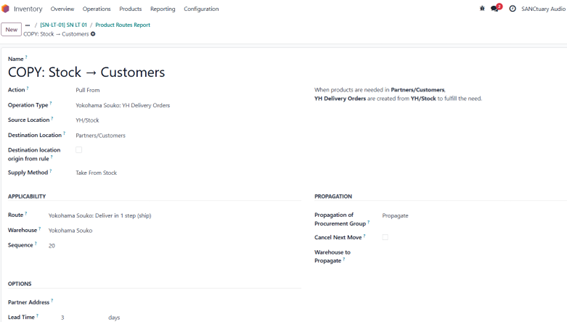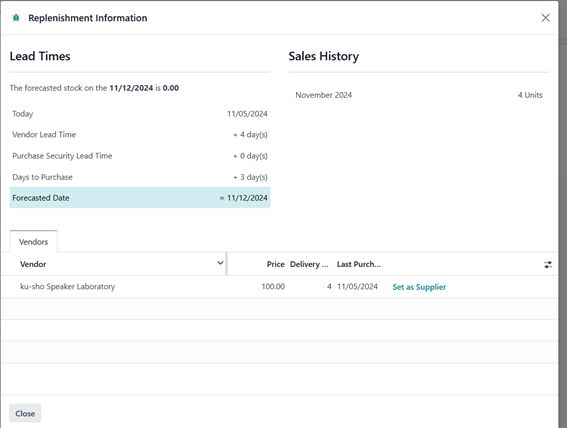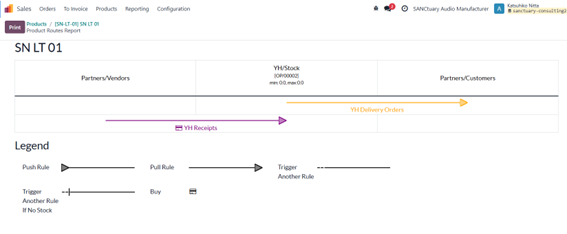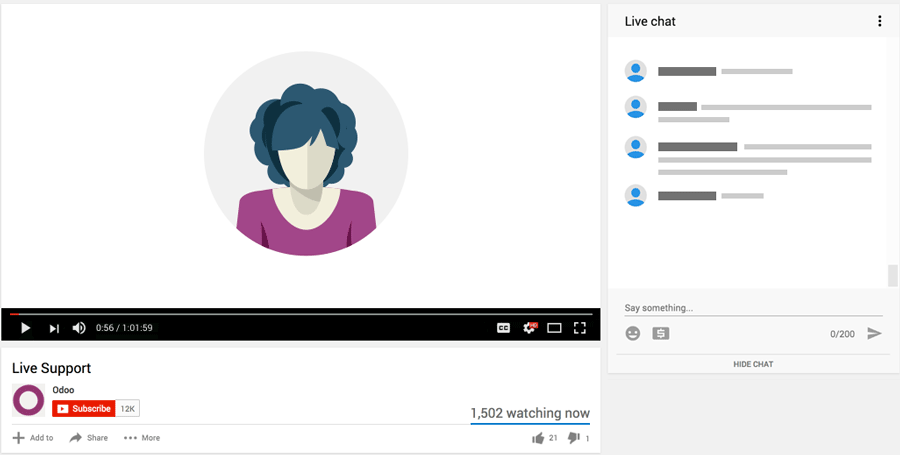Thank you for sharing your valuable observation about Visibility Days functionality. Before discussing your finding, I'd like to confirm my understanding of how this feature should work according to the Odoo documentation:
The system calculates the "Need appears date" by working backwards from the delivery date:
For example:
- Delivery Date: 11/18
- Lead Times: Vendor (4 days) + Purchase Security (1 day)
- Need appears date: 11/13
At this Need appears date (11/13), the system recognizes that we will have negative stock. Visibility Days allows users to see this upcoming shortage on the replenishment dashboard before this date. If we want to see it 7 days before Need appears date, we set Visibility Days to 7.
Although my example is for a purchased item and yours is for manufactured items, the core concept of "Need appears date" is fundamentally the same.
Regarding your observation that "Visibility days seems to only be activated if there is already a demand order within range (without visibility days)" - could you help me understand what specifically defines a "demand order within range"? I have a confirmed sales order creating negative stock, but the replenishment dashboard doesn't show it despite setting appropriate Visibility Days.
Your insight would be very helpful in understanding the actual behavior of this feature.
This understanding is crucial for properly implementing inventory management in both distribution and manufacturing environments, so I look forward to learning from your experience.




